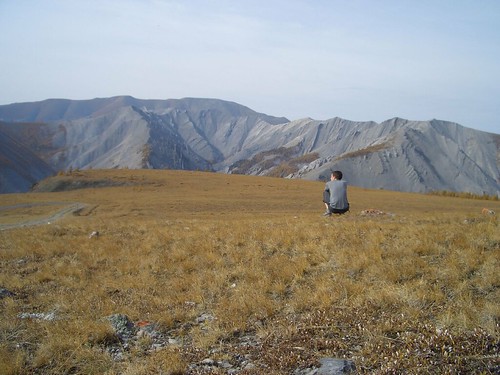October 22, 2005
I'm not sure how to sum up my first day in Peru; I guess that things can only get better. Lan Peru lost my main bag - they said that it didn't make it onto the plan (although I had a 4 hour layover between Chicago -> Miami and the Miami -> Lima flight. Luckily, I was prepared and all of my really important daily items (money, guidebook, camera, toiletries) were in my daypack. The man at the Lan Peru lost luggage desk said that I could expect my bags to be sent to my hotel tomorrow morning. No worries, I told myself. One day without fresh clothes isn't a big deal at all. However, I would need my main rucksack prior to leaving for Bolivia, as it had all of my cold weather clothes.
The flight between Lima and Cuzco was amazing; the plane was flying over the Andes for most of the trip, and the sky was partly cloudy and sunny. I was imagining all of the great hiking that could happen 10,000 feet below me.
A woman from Amaru Hostel met me at the airport; I was worried that no one would be there to pick me up, as my flight had been delayed. She was pleasant and showed me to the car. On my way to the hostal, she started to tell me that my room was no longer available, but that I did have a room at their sister hotel. Always the pessimist, I started thinking that the wrong people picked me up. This is the oldest scheme in the book - tell the tourist that where they were originally staying cannot house them for whatever reason. I just listened and was polite during the remainder of the ride. When we got out, we had to go up about 50 steps - I could feel the elevation already. I was breathing heavy at the top of the stairs, and I was in good shape. She led me down this alley, to another dark hallway of doors. I started to get a bit nervous, but she assured me that we were going to the Amaru's sister hotel; Hotel Jaunita. We stopped at a doorway on the end of the hall, and buzzed the doorbell. I had my doubts about my safety; I didn't see any sign for a hostel, or any indication that this was a private residence.
The door finally opened into a lovely courtyard filled with flowers and chairs. 'This isn't all that bad' I told myself. It took some convincing, but I stayed the night here. After all, Lan Peru was sending my bags to Amaru Hostel and if I went elsewhere, I wouldn't be able to get my bags back. After collecting my wits, and leaving the bare essentials in my daypack, I headed out to explore a bit of Cuzco. The city has a few hundred thousand people, but it felt like a small town. The roads and sidewalks in the old part of the city are made of stones, which gave the area a historical charm. I could only imagine that someone laid the stones by hand several hundred years ago, and that they are still holding up today. It's ironic that we've advanced to asphalt and concrete in the US and those materials only last 5 - 10 years. The houses were made of stone and other earthen materials. My favorite aspect of the buildings were the brightly painted doors - I saw turqoise, yellow, and red within a matter of minutes.
When I left the hostel, I was wearing a jacket. I soon had to take it off, as the sun is extremely strong at this elevation. The temperature was 70 F, but it felt more like 90 F in the sun. Bringing my sunglasses on this trip was a good idea. I would learn in a few days that forgetting my baseball hat at home was a bad idea (or lack of an idea altogether).
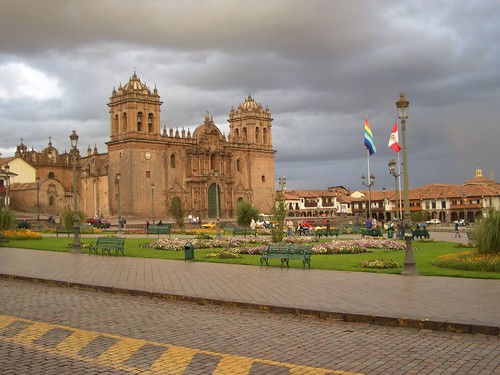
Katrine - the woman from Amaru Hostel - said that she would gather information about night buses to Copacabana, Bolivia. I had about 4 days before my 7 day trek started, and I wanted to spend a few days visiting Lake Titicaca. I met Katrine at 7pm at my hostel, and she had options for me. I could take a nice bus for about $60US round trip, or I could pay $15 for a 'not nice bus'. I asked her to book tickets on the $60 bus for the following evening. I would leave Cuzco at 10pm and reach Copacabana at 12pm the following day.
I made some plans for the next day, sent an email to everyone letting them know that I had made it, and then headed back to the hostel to sleep.
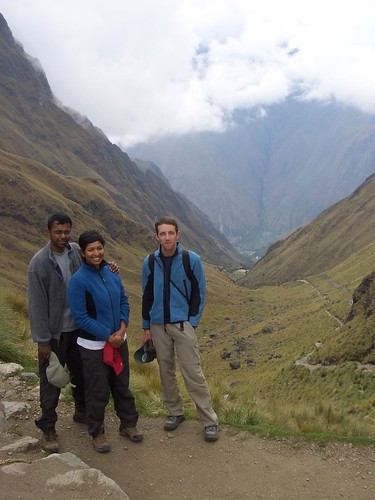 In the middle of all of the walking, we visited two Inka sites; Runkurakay and Sayaqmarka. Runkurakay had a great view of the Inka trail from Dead Womans' Pass to the Paqaymayu campsite. Raul retold the history of the ruins; the structure was once used as a lookout tower, then an observatory, and lastly as a hospital. The site was a link between the highlands and the lower elevation where coca was grown. Did you know that novacaine is made from the coca plant? An alkaline from the plant is extracted and processed so that I don't have to feel my teeth being operated on.
In the middle of all of the walking, we visited two Inka sites; Runkurakay and Sayaqmarka. Runkurakay had a great view of the Inka trail from Dead Womans' Pass to the Paqaymayu campsite. Raul retold the history of the ruins; the structure was once used as a lookout tower, then an observatory, and lastly as a hospital. The site was a link between the highlands and the lower elevation where coca was grown. Did you know that novacaine is made from the coca plant? An alkaline from the plant is extracted and processed so that I don't have to feel my teeth being operated on.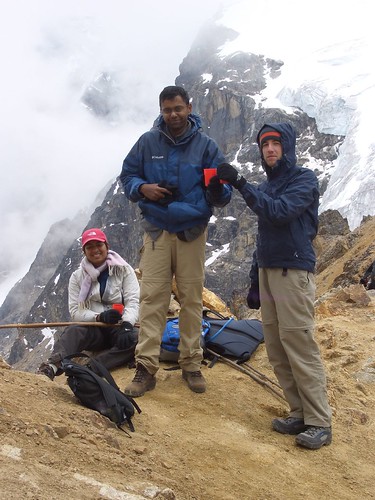
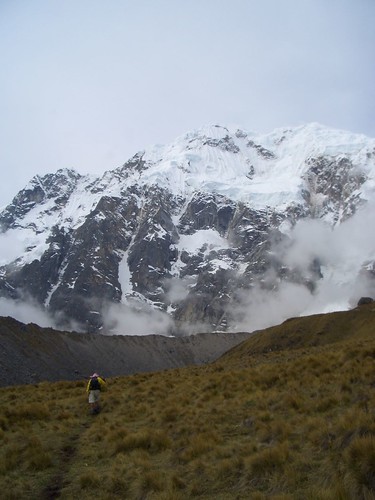
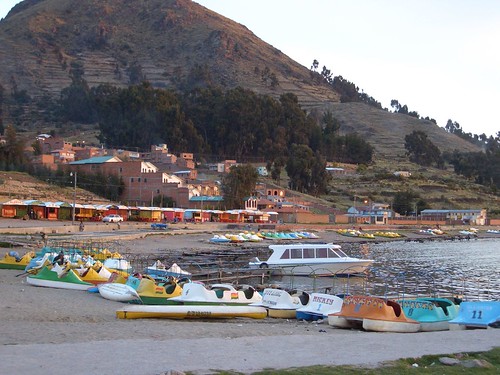 The town of Copacabana is extremely small and has gorgeous views of Lake Titicaca. I wasn't able to get into the hostel that I had wanted to stay at (Hotel La Cupula - it looked really nice for $10/night), so I checked into Hotel Colonial. I got a single room w/ bath for 40 bolivianos. I washed up and headed out to look for information on visiting Isla del Sol in the afternoon. I had wanted to spend an entire day on the island, but due to my bus schedule back to Cuzco, I opted for the afternoon only. I met up with Kristina, a woman from Italy, and we explored the island. I wish I had had more time on Isla del Sol - the expansive views of Lake Titicaca were wonderful. The water was a deep blue, and there wasn't a cloud in the sky. I took a few photos, but concentrated on just enjoying the surroundings. After an hour, the boat was heading back to mainland, so we had another 1.5 hr ride back.
The town of Copacabana is extremely small and has gorgeous views of Lake Titicaca. I wasn't able to get into the hostel that I had wanted to stay at (Hotel La Cupula - it looked really nice for $10/night), so I checked into Hotel Colonial. I got a single room w/ bath for 40 bolivianos. I washed up and headed out to look for information on visiting Isla del Sol in the afternoon. I had wanted to spend an entire day on the island, but due to my bus schedule back to Cuzco, I opted for the afternoon only. I met up with Kristina, a woman from Italy, and we explored the island. I wish I had had more time on Isla del Sol - the expansive views of Lake Titicaca were wonderful. The water was a deep blue, and there wasn't a cloud in the sky. I took a few photos, but concentrated on just enjoying the surroundings. After an hour, the boat was heading back to mainland, so we had another 1.5 hr ride back.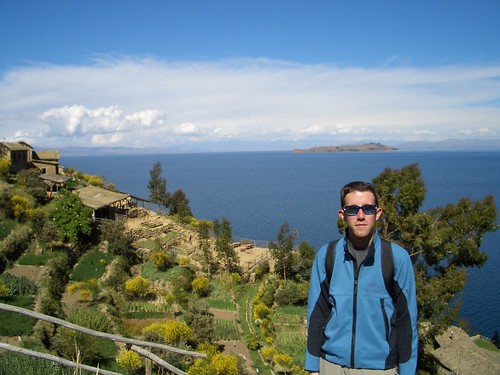 Kristina and I met up on the beach for the sunset and then went off to grab some dinner.
Kristina and I met up on the beach for the sunset and then went off to grab some dinner.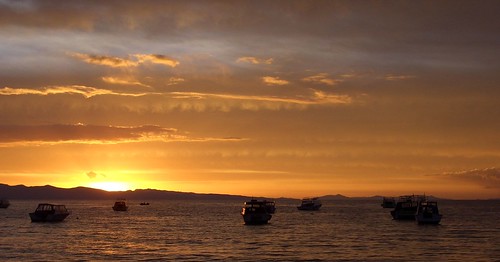 About 15 minutes into dinner, the power to the city went out. It made for a wonderful, relaxing meal - I guess that they were using gas to cook the food. After a wonderful 3 course meal (with a free glass of wine because of the power outage!) for a few dollars, we carefully crept back to the hotel. The hotel didn't have any candles, so we were feeling along the hallway so as not to stumble on anything. I got back to my hotel room safely and used my digital camera's LCD screen for a bit of light while I tried to take out my contacts in the dark. I went to sleep thinking about how I was going to maximize my time for my last day in Copacabana.
About 15 minutes into dinner, the power to the city went out. It made for a wonderful, relaxing meal - I guess that they were using gas to cook the food. After a wonderful 3 course meal (with a free glass of wine because of the power outage!) for a few dollars, we carefully crept back to the hotel. The hotel didn't have any candles, so we were feeling along the hallway so as not to stumble on anything. I got back to my hotel room safely and used my digital camera's LCD screen for a bit of light while I tried to take out my contacts in the dark. I went to sleep thinking about how I was going to maximize my time for my last day in Copacabana.
